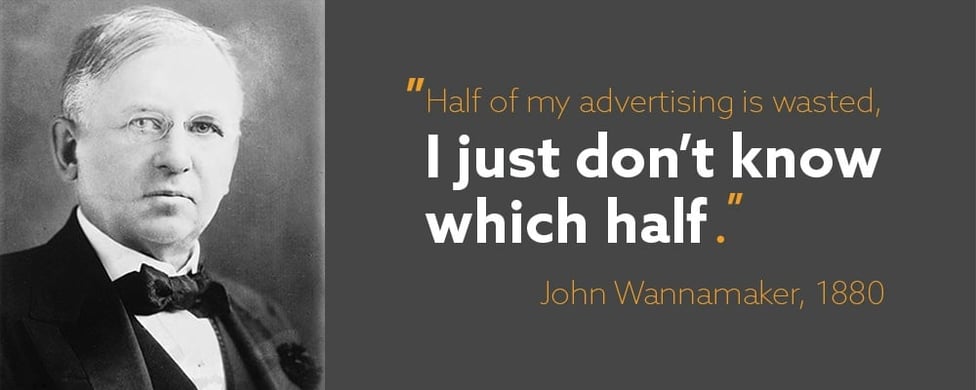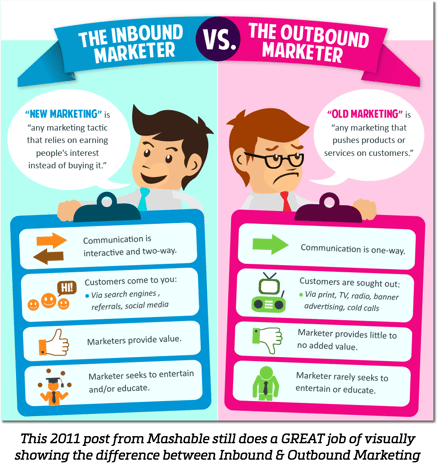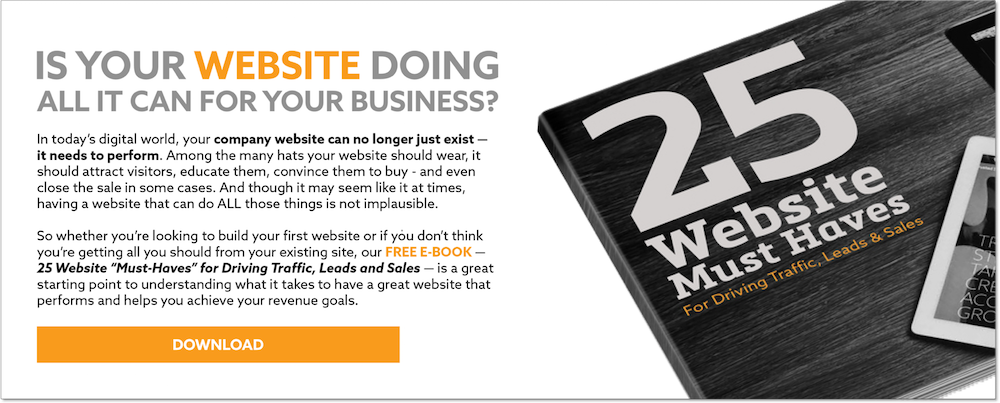
"Half of my advertising is wasted, I just don't know which half." — John Wannamaker
No doubt if you were marketing in any organization up until the early 90s, you either fully subscribed to Mr. Wannamaker's theory or felt as if you were stuck within these constraints. Given the available media at the time, there was simply no way to accurately measure the return on your marketing or advertising investment. Of course, some welcomed the ambiguous nature of connecting marketing/advertising spend to specific goals or revenue as it allowed for a lot of, let's just say, "fuzzy math" to get budgets approved. But for most, this felt like the promotional “P” in the marketing mix that was never really under one’s control and was a constant source of uneasiness.
With the dawn of the internet age and the bubble growth in the mid 1990s, many organizations leapt at the opportunities afforded to them by internet advertising. But with little context of how to effectively advertise through this new medium, they relied on familiar "spray-and-pray" techniques—mainly through display ads. After the 1st internet bubble burst in 2001, many organizations again shifted their marketing dollars, this time to search engine advertising since it allowed them to better target consumers where they began their purchase process and was more measurable than display advertising.
In the last 5 years, the drive for improved ROI and efficiency from their marketing spend, combined with the ever-changing search engine algorithms, has led marketers to leverage search engine optimization (SEO), social media, content marketing and, to some degree, marketing automation as huge components of their digital mix. All of these, in and of themselves, give today's marketers a level of control over their spend that they've never seen before with the added benefit of (generally) higher returns.
So what's next?
The "next" isn't really next... it's been here for a few years now. It's called Inbound Marketing and it's probably the most authentic, organic, and powerful form of digital marketing to date. In a nutshell, Inbound Marketing is marketing focused on getting found by customers at different points within the natural journey they take when buying a product or service. But much like you can't describe sweet unless you understand bitter, to get a good understanding of Inbound Marketing, you must also understand its antithesis — Outbound Marketing.
What is Outbound Marketing?
Outbound Marketing is, in a word, "traditional" marketing. While the focus of any marketing activity is to find customers, with Outbound Marketing marketers push their message out far and wide hoping that it is not only heard or seen, but also that it resonates with "someone" — basically, "spray-and-pray". Inherently, Outbound Marketing tries to force an organization's products or services into the collective consciousness of a group of people who may or may not be in the market for these products or services at that time.
Generally speaking, Outbound Marketing techniques sacrifice targeting for scale and are relatively difficult to accurately measure in terms of effectiveness or ROI. These techniques include cold-calling, print and broadcast advertising, mass mailings, trade shows, and email marketing (the spammy kind that's sent out to purchased lists). These techniques can also be rather costly, particularly when looking at them from a cost-per-lead or cost-per-conversion standpoint. And while all of these techniques have varying degrees of effectiveness and relative costs, they all have one thing in common: they interrupt people while they are doing something that has little to do with one's brand, product, or service.
In 2004, Yankelovich Partners conducted a study that measured people's attitudes towards advertising. While the study offered no specific numbers in terms of how many ads or ad messages we are exposed to on a daily basis, it has been cited numerous times by Inc. Magazine, the N.Y. Times, U.S.A. Today, and many more. Whether you subscribe to these estimates or to the more conservative numbers published by Consumer Reports — "the average American is exposed to 247 commercial messages each day" — one thing is abundantly clear: consumers are interrupted and inundated with Outbound Marketing messages every hour of every day regardless of where they are or what they're doing... and they're not exactly fond of this approach.
Need proof of how consumers feel about these Outbound Marketing techniques? Think of the increasingly creative ways that people have developed to block or evade these tactics: DVRs, caller ID, email spam filtering, satellite radio, internet pop-up blockers, and many more. But beyond the consumer's general distaste for these tactics, the cluttered mess that has become our marketing ecosystem has not only placed a premium on finding increasingly "gimmicky" ways to get noticed but also on the perfect sequence of events that must come together for your message to even register (let alone resonate) with your target audience. That's an awful lot that must "work" for your marketing spend to work for you.
That's not to say there's no place for Outbound Marketing in today's marketing world. Certainly, the bigger brands with larger budgets can still afford to muscle their way into consumers' consciousness with "brand building" initiatives whose ROI can be more loosely measured. There are times when a pay-per-click approach — particularly when geared towards specific conversions — can meet a short term need. But more and more, Outbound techniques are becoming marginalized in favor of the less costly, more "trackable", and more powerful Inbound Marketing approach.
What is Inbound Marketing?
"We need to stop interrupting what people are interested in and BE what people are interested in." — Craig Davis, former Chief Creative Officer at J. Walter Thompson
While organizations were busy trying to find new ways to use the internet to promote their products or services, the internet was changing the very way consumers purchase those same products and services. The internet gave consumers easy and scalable access to tools they didn't previously have at their disposal:
- The ability to consume information when they want and how they want
- The ability to educate themselves about many possible solutions to problems or answers to questions
- The ability to formulate opinions and make purchase decisions based on their own research and the opinions of their peers—without a sales person to "help" the process
This change in buyer behavior was the impetus behind the birth of Inbound Marketing around 2010. Inbound Marketing focuses on truly knowing your potential customers — their needs, their goals, the problems they are trying to solve — and addresses their needs with a proven methodology that works with today's buyer behavior, not against it. Inbound Marketing seeks to attract potential customers while they're actually looking for solutions to problems, answers to questions, or evaluating product or service alternatives instead of fighting for their attention and interrupting what they're doing to cram one's products into their line of sight. Inbound Marketing is about creating authentic connections with potential customers by aspiring to help them make informed, educated purchase decisions, which will ultimately draw them to your products and keep them coming back for more. Because it's so customer-centered, when properly implemented, Inbound is the marketing that people actually love!
So how does Inbound Marketing work? Let's look at it from the standpoint of what you need to make Inbound Marketing work:
- Website: You need a great website to serve as the centerpiece or basecamp of your Inbound Marketing efforts. It will allow you to attract visitors, convert leads, close customers, and even encourage advocates to promote your brand. The website must not only be well-designed and beautiful, but it must also provide the necessary tools to activate, execute, and measure the impact of each of the tactics implemented.
- Content: Back in 1996, Microsoft CEO Bill Gates wrote an article titled Content is King in which he stated, "Content is where I expect much of the real money to be made on the internet..." You need to create great, targeted content that your potential customers will want to consume (and potentially share). The point of the content is to attract your potential customers regardless of where they are in their Buyer's Journey because it offers something of value to them. So think about educating them on their problems and providing solutions to those problems, not necessarily about telling them who you are and what you do. For example, an awesome marketing agency may create an interesting blog post explaining the differences between Inbound and Outbound Marketing to attract the VP of Marketing of an organization who is trying to decide between the two alternatives as they plan out their marketing initiatives for the coming year ;-). That same agency may also decide to develop a free E-Book of website "must-haves" to help the marketing managers who are looking to rebuild their company website or who feel like their existing site just isn’t getting the traffic, leads, or sales conversions they were hoping for ;-). The possibilities are endless — blogs, vlogs (video blogs), videos, e-books, case studies, white papers, and much more.
- Distribution: In 2013, Jonathan Perelman, VP of Agency Strategy at Buzzfeed, stated the following to add to Bill Gates' article: “Content is king, but distribution is queen. And she wears the pants.”
Funny, yes — but also true. Not only must your content be properly structured so it's easy to find (think SEO), but you must also do your part to make it available where your potential customers want to consume it. This includes email marketing and, most importantly, the numerous social media platforms that are available. And this distribution doesn't necessarily happen once. Because the content you create provides a benefit in and of itself to your potential customers, it can be distributed (think Shared) at different times without losing its relevance or potential impact.
- Analysis & Adjustments: All analysis should be grounded in the context of your objectives. Going back to that awesome marketing agency ;-), the goal of its Inbound Marketing vs. Outbound Marketing blog post is clearly to attract new visitors (and if you've gotten this far, it may actually have worked). Conversely, the free E-book offer is a way to qualify potential customers based on a specific need (someone who downloads that E-book is probably looking at doing "something" with his/her website). The cool thing with Inbound Marketing is that not only can you set your objectives on a very granular level, but you can also measure each tactic relative to that objective in real time. Because you have ultimate control over your website, your content, and the way that content is distributed, you can make the necessary adjustments to ensure that you meet your objectives.
The very nature of Inbound Marketing lends itself to a long-term approach (at least initially). Your blog posts aren't instantly going to hit 1st page on any search engine results page (SERP) and you'll need some form of an audience before you can distribute your content through social media. But because the content you create today will continue to work for you 6 months (or longer) from now, this long-term approach is also why Inbound Marketing is generally less costly in the long run—up to 62% less costly from a cost per lead standpoint—than Outbound Marketing.
Which Approach is Right for Your Organization?
"If you have more money than brains, you should focus on Outbound Marketing. If you have more brains than money, you should focus on Inbound Marketing." — Guy Kawasaki, Chief Evangelist, CANVA
We don't think the answer is as clear-cut as Mr. Kawasaki makes it out to be. Only your organization can make that judgement based on your specific objectives. As mentioned previously, many of the bigger brands continue to utilize Outbound Marketing for initiatives whose ROI can be more loosely measured, and many organizations still find conversion-based pay-per-click campaigns can help them meet short term needs. But more and more, we see our clients leaving behind the seemingly outdated Outbound Marketing approach in favor of the less costly, more "trackable", and more powerful Inbound Marketing approach.





